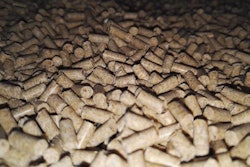A $2.4 million capital investment will boost production capacity at the Purina Animal Nutrition plant that has been making livestock feed in Mason City, Iowa, for 55 years. The upgrades will increase availability of locally produced feed to farms in north-central and northeast Iowa and southeast Minnesota.
“Purina Animal Nutrition has been making feed for animals in Iowa and Minnesota at this plant for decades, and our modernization project will help us continue to do so,” says Wesley Fiddelke, plant manager at the Purina Animal Nutrition Mason City, Iowa, facility. “Agriculture is a major economic driver in this region, and we are proud to be in a position to keep growing and working with our local agricultural community.”
This Purina Animal Nutrition feed manufacturing facility makes 364 products in different forms for many styles of farm operations. Purina’s goal is to develop feed products that help animal owners unlock the greatest potential of every animal.
“The products we make in Mason City are backed by 125 years of nutrition research and innovation,” Fiddelke says. “Our feed is formulated by a team of experts who work with animals every day and are committed bringing out the best in each one.”
Most of the feed made at Purina Animal Nutrition in Mason City, Iowa, is sold to farmer-owned cooperatives within a 120-mile radius of the plant. The local facility makes feed for swine, dairy cattle and beef cattle, as well as sheep and poultry.
“With new, more modern equipment, we will be better suited to meet the needs of our customers,” Fiddelke says.
The modernization project will increase the amount of young animal feed the plant can make each year by 25 percent. Changes leading to this increase include additional finished feed storage, faster load-out for customers and more powerful, efficient pelleting equipment.
Increasing pelleting capacity is important for this plant, which services key dairy and swine production areas in Iowa and Minnesota. Feeds in pelleted forms are commonly fed to growing pigs and dairy calves. Pelleted feeds make up 60 percent of the plant’s production output.














